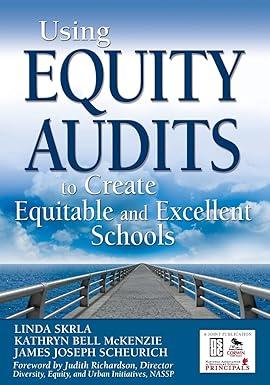Question
Closing the Balances in The Variance Accounts at the End of the Year Yohan Company has the following balances in its direct materials and direct
Closing the Balances in The Variance Accounts at the End of the Year
Yohan Company has the following balances in its direct materials and direct labor variance accounts at year-end:
| Debit | Credit | |
| Direct Materials Price Variance | $13,550 | |
| Direct Materials Usage Variance | $1,120 | |
| Direct Labor Rate Variance | 870 | |
| Direct Labor Efficiency Variance | $12,640 | |
Unadjusted Cost of Goods Sold equals $1,570,000, unadjusted Work in Process equals $276,000, and unadjusted Finished Goods equals $180,000.
Required:
1. Assume that the ending balances in the variance accounts are immaterial and prepare the journal entries to close them to Cost of Goods Sold. Note: Close the variances with a debit balance first. If an amount box does not require an entry, leave it blank or enter "0".
| Cost of Goods Sold | |||
| Direct Materials Price Variance | |||
| Direct Labor Efficiency Variance | |||
| Close variances with debit balance | |||
| Direct Materials Usage Variance | |||
| Direct Labor Rate Variance | |||
| Cost of Goods Sold | |||
| Close variances with credit balance |
Feedback
Companies must restate costs and inventories at the end of the year to actual cost. So, variance accounts must be closed out and their balances applied to Cost of Goods Sold (if immaterial) or prorated among Cost of Goods Sold, Work in Process, and Finished Goods.
What is the adjusted balance in Cost of Goods Sold after closing out the variances?
$
Feedback
Companies must restate costs and inventories at the end of the year to actual cost. So, variance accounts must be closed out and their balances applied to Cost of Goods Sold (if immaterial) or prorated among Cost of Goods Sold, Work in Process, and Finished Goods.
2. What if any ending balance in a variance account that exceeds $9,000 is considered material? (a) Close the immaterial variance accounts to Cost of Goods Sold. (b) Prorate the largest of the labor variances among Cost of Goods Sold, Work in Process, and Finished Goods on the basis of prime costs in these accounts. (c) Prorate the largest of the material variances among Cost of Goods Sold, Work in Process, and Finished Goods on the basis of prime costs in these accounts. The prime cost in Cost of Goods Sold is $1,050,000, the prime cost in Work in Process is $164,600, and the prime cost in Finished Goods is $136,000. If an amount box does not require an entry, leave it blank or enter "0".
Note: Round all interim calculations to three decimal places, and round your final answers to the nearest dollar. Adjust credit entry for rounding to ensure debits equal credits in journal entry.
| (a) | Direct Materials Usage Variance | ||
| Direct Labor Rate Variance | |||
| Cost of Goods Sold | |||
| (b) | Work in Process | ||
| Finished Goods | |||
| Cost of Goods Sold | |||
| Direct Labor Efficiency Variance | |||
| (c) | Work in Process | ||
| Finished Goods | |||
| Cost of Goods Sold | |||
| Direct Materials Price Variance |
Feedback
See Cornerstone 9.5.
What are the adjusted balances in Work in Process, Finished Goods, and Cost of Goods Sold after closing out all variances?
| Adjusted balance | |
| Work in Process | $ |
| Finished Goods | $ |
| Cost of Goods Sold | $ |
Step by Step Solution
There are 3 Steps involved in it
Step: 1

Get Instant Access to Expert-Tailored Solutions
See step-by-step solutions with expert insights and AI powered tools for academic success
Step: 2

Step: 3

Ace Your Homework with AI
Get the answers you need in no time with our AI-driven, step-by-step assistance
Get Started


